Versuchen GOLD - Frei
The Bubbler
Muse Science Magazine for Kids
|November/December 2019
Bursting with ideas at the Madison Public Library

In Wisconsin, a drinking fountain isn’t called a drinking foundation. It’s a “bubbler.” But the Bubbler is also an amazing maker space at the public library in Madison, Wisconsin. Why the weird name? Because the Bubbler is where great ideas bubble up in people’s brains and burst out into the world as amazing art, contraptions, and more. Let’s visit the Bubbler to see what it’s all about and to see what kids like you are making.
Meet the Bubblerarian
Rebecca Millerjohn is the Bubbler’s Youth Services Librarian. She also goes by “Bubblerarian.” That’s Bubbler + librarian, in case you’re wondering. Millerjohn comes up with ideas for maker projects and helps bring them to libraries and other spots all over Madison. (Her job also requires cutting lots of felt, which is her personal favorite making material.)
“Libraries make great maker spaces because they’re accessible to everyone,” Millerjohn says. What does she mean by accessible? First: you don’t need an invitation to go to the library. Second: you don’t have to pay, because all the materials are FREE!
Many people think of literacy as the ability to read and write. But literacy goes beyond books, explains Millerjohn. It also “looks like opportunities to explore, to try things out, to figure out the world around you,” she says.
Some maker spaces focus on job skills or STEM (science, technology, engineering, and math). But the Bubbler is a creative space that emphasizes hands-on learning and making. “That includes everything from digital tools to old-school making techniques,” Millerjohn says. ‘Old-school’ making techniques include sewing, printmaking, building, and more.

Diese Geschichte stammt aus der November/December 2019-Ausgabe von Muse Science Magazine for Kids.
Abonnieren Sie Magzter GOLD, um auf Tausende kuratierter Premium-Geschichten und über 9.000 Zeitschriften und Zeitungen zuzugreifen.
Sie sind bereits Abonnent? Anmelden
WEITERE GESCHICHTEN VON Muse Science Magazine for Kids
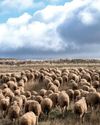
Muse Science Magazine for Kids
ANIMAL FIREFIGHTER TO THE RESCUE
Can animals help manage the risks of deadly wildfires?
3 mins
Muse July 2025: The Story Behind Wildfires
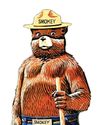
Muse Science Magazine for Kids
FIRE DANGER
WHY THE RISK OF WILDFIRES KEEPS GROWING
4 mins
Muse July 2025: The Story Behind Wildfires
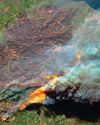
Muse Science Magazine for Kids
The Miller NEW Normal
WHAT TODAY’S WILDFIRES TELL US ABOUT OUR FUTURE
8 mins
Muse July 2025: The Story Behind Wildfires
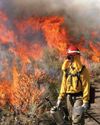
Muse Science Magazine for Kids
WOMEN AND FIREFIGHTING: A GOOD FIT
Jessica Gardetto is a firefighter. Her father was, too. “I grew up with my dad coming home smelling like wildfire and covered in soot,” she says.
1 min
Muse July 2025: The Story Behind Wildfires
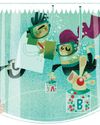
Muse Science Magazine for Kids
What is happening on your fingertips when they get all wrinkly in a hot tub?
—Felix G., age 10, Montana
1 mins
Muse July 2025: The Story Behind Wildfires

Muse Science Magazine for Kids
WHEN the SMOKE CLEARS
THE LINGERING EFFECTS OF THE RECENT PACIFIC PALISADES AND ALTADENA EATON FIRES
6 mins
Muse July 2025: The Story Behind Wildfires

Muse Science Magazine for Kids
PICKING TEAMS
Keep it fair with a strategy that relies on geometry.
2 mins
Muse July 2025: The Story Behind Wildfires
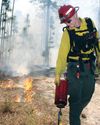
Muse Science Magazine for Kids
SHAN CAMMACK
WILDLIFE BIOLOGIST AND FIRE SAFETY OFFICER
3 mins
Muse July 2025: The Story Behind Wildfires
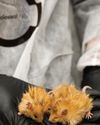
Muse Science Magazine for Kids
Scientists Create Mice With Woolly Mammoth-Like Fur
RESEARCHERS AT A COMPANY IN TEXAS ARE WORKING TO CREATE A LIVING ANIMAL THAT RESEMBLES THE EXTINCT WOOLLY MAMMOTH. Recently, they produced mice with traits of the large mammal. The mice all have coats with mammoth-like fur, and some of the small mammals also have genes that help them store fat. Both features would help the animals survive in the cold Arctic, where the woolly mammoth once lived.
1 min
Muse July 2025: The Story Behind Wildfires

Muse Science Magazine for Kids
Cool Sunshade Added to the Nancy Roman Space Telescope
THE NANCY ROMAN SPACE TELESCOPE IS A NEW TELESCOPE THAT NASA IS BUILDING AND WILL LAUNCH INTO SPACE, LIKELY IN EARLY 2027.
1 min
Muse July 2025: The Story Behind Wildfires
Translate
Change font size

